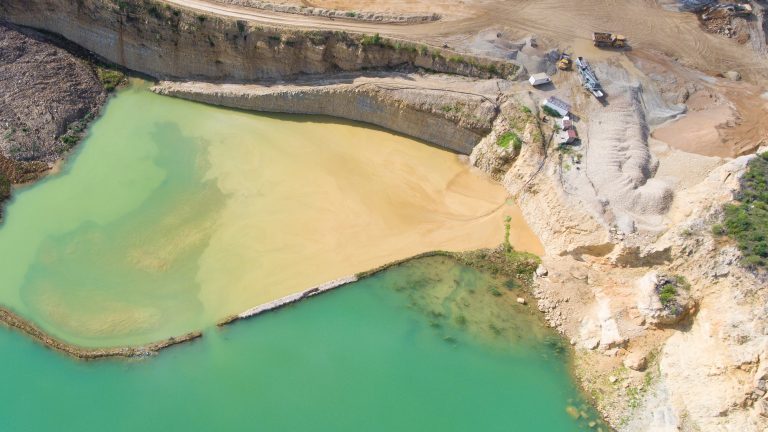by: Katherine Stenger
In 1849, California was considered to be the land of gold; today, it is a region filled with more toxins than shiny metals, a direct consequence of mining activity from the California Gold Rush nearly 200 years ago. Community members in the Sierra Nevada foothills had been particularly concerned for decades, worried that gold-extracting heavy metals that persistently remain in the environment of the region lead to the region’s higher than average instances of breast cancer. However, no biomonitoring of the residents had ever been conducted, and cancer risks, particularly for women, had never been assessed. In 2019, a group of researchers sought to evaluate the health of this population by quantifying traces of mining-era toxins in urine. In partnership with Nevada County, the team uncovered connections between lifestyle, heavy metal exposure, and potential health risks, and worked to create an inclusive dialogue regarding the potential health consequences of living in a mining affected region.
Gold mining is directly associated with the industrial use of various metals and toxins, which were a vital part of separating gold from surrounding sediment regardless of the extraction method being used. One such method was panning, which involved collecting river silt in a shallow metal pan before adding mercury and other heavy metals to separate gold from the surrounding debris. Additionally, these gold extracting compounds included mercury, arsenic, and cadmium, which are known carcinogens, or cancer-causing compounds that can also lead to poisoning if ingested or exposed to in high amounts. While these elements are known to directly lead to the development of cancer cells in a research setting, it is unclear whether cancer and other observable health effects are directly caused by these Gold Rush-era contaminants. Although these practices occurred nearly 200 years ago, it is known that these elements are still likely to create health hazards due to the significant amount of time it takes for them to decay completely and no longer pose a threat to human health..
To begin what is planned to be an ongoing study in the years to come, researchers focused solely on women, a demographic thought to be particularly at risk for health problems associated with heavy metals introduced to the region. Sixty women from arguably the most affected region, Nevada County, were recruited to participate through the production of extensive radio and internet advertising. Participants then filled out a questionnaire regarding their lifestyle habits and choices, such as smoking and diet, and then asked to provide a urine sample. The research institute’s lab subsequently analyzed the urine samples for traces of heavy metals related to gold extraction methods, including arsenic, cadmium, mercury, cobalt, manganese, and uranium. The study utilized octopole collision cell technology, which involves the collision of helium with interfering ions, thus isolating the elements of interest. Chemical levels in the sample group were then compared to national averages before being directly analyzed in conjunction with the aforementioned lifestyle questionnaires.
The results of this study shed light on the situation of women living in gold mining impacted regions of Northern California. While the test subjects were found, on average, to have lower levels of uranium, mercury, and manganese than the national average, total arsenic and cadmium levels were found to be significantly higher. Twelve women had what are considered to be dangerously high arsenic levels above the national level of concern, which is 20 μg/L. When cross referenced with the lifestyle questionnaire, some dietary correlation was found, including higher levels of arsenic in those who consumed local fish, meat, and produce. Women who lived in the area for more than ten years or were smokers were also found to have higher arsenic levels. Cadmium levels were also found to be elevated in regular smokers, residents living along dirt roads, and women with active and outdoor lifestyles within the local region. However, cadmium levels on average were lower than the national average in the test region. That being said, women who had lived in the area for more than ten years had cadmium levels higher than the national average, presumably due to the ability of the element to accumulate over time. The study ultimately concluded that women who lived in Nevada County for a prolonged period of time, were likely to have relatively low levels of uranium, mercury, and manganese in their bodies, but more likely to have abnormally high levels of cadmium and arsenic.
The results raise serious concerns for the health of women living in the region. Many women are genetically predisposed to have a high chance of developing breast cancer, and exposure to both cadmium and arsenic are thought to lead exponentially increase this risk. Breast cancer cells can grow when they are exposed to estrogen, but only when estrogen receptors are activated. Interestingly, both cadmium and arsenic bind to and activate these estrogen receptors, thus increasing the risk of those exposed to either element to the development of breast cancer. Additionally, when compared with local and national data, rates of breast cancer in the Nevada County region have been noticeably higher than the national average since data was first collected in 1988.
Although this first test group was limited to women within a small geographical area, the findings also raise concerns for other demographics within the greater Northern California region. For example, men are at risk for certain cancers, and the same heavy metals associated with increased cancer risk in women could raise the same risk for men. Additionally, as this region is physically near the “top” of the watershed and thereby supplies water through tributaries for the Sacramento Valley and the San Joaquin Valley, these accumulated heavy metals associated with gold mining could travel and affect those not living in the originally affected zone. California provides agricultural goods for much of the country and world as well, and if water originating in the Sierra Nevadas is used for irrigation, heavy metals could also build up in the produce and in turn also affect people in both the domestic and international zones.
The researchers hope to soon expand their study to include a larger portion of the population, including adult men, older women, and children. The impact of gold mining reaches far beyond both the region and time period in which it occurred. The study found that heavy metals used in the 1849 California Gold Rush still impact the women of today, and their ability to remain toxic for long periods of time and accumulated relate to increased risk for certain cancers. Due to the location of gold mining impacted regions in California, this situation runs the risk of affecting so many more individuals beyond the studied zone.
Photo by Curioso Photography on Unsplash







